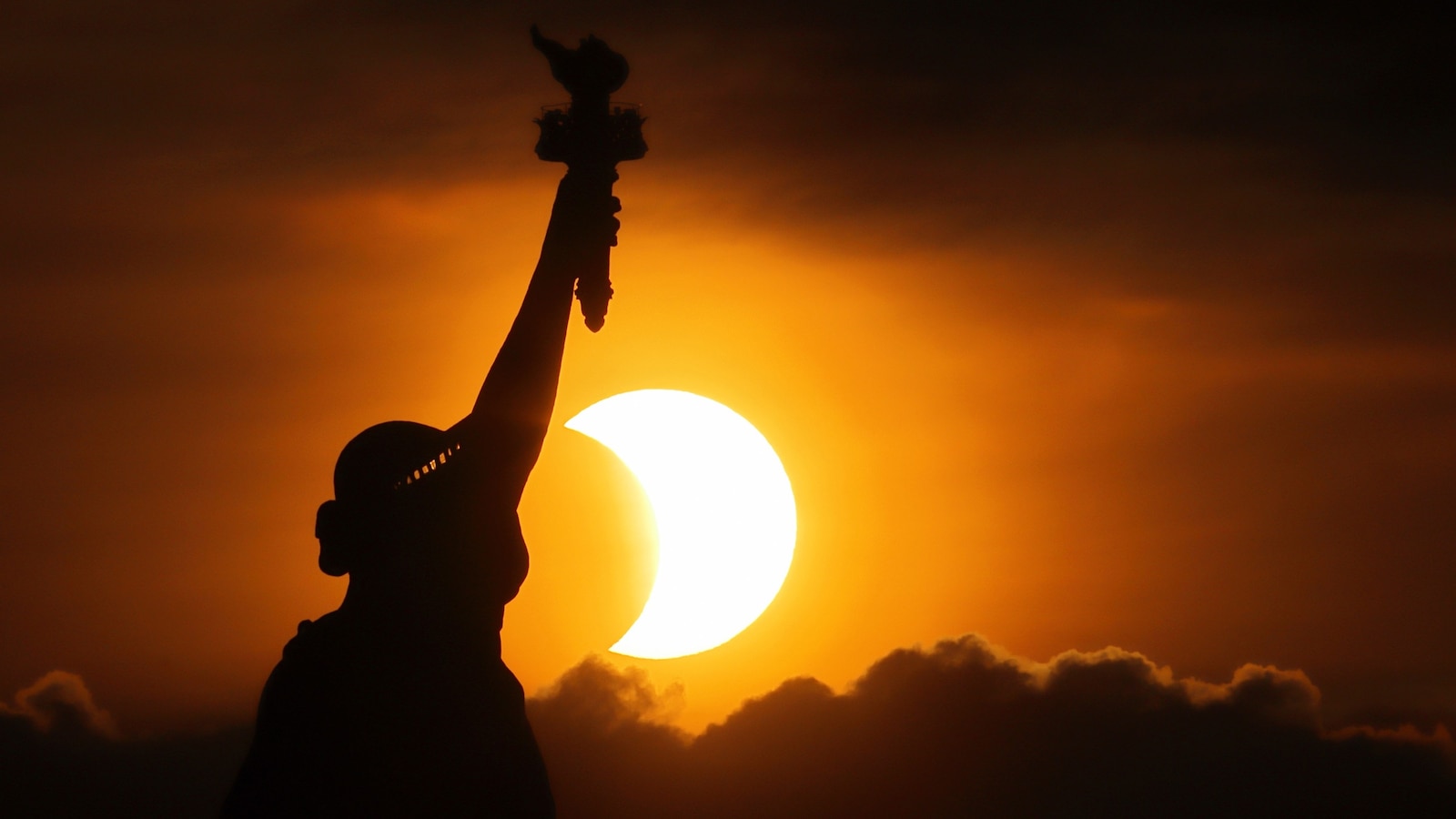Witness the Partial Solar Eclipse: Your Complete US Viewing Guide
Editor’s Note: A partial solar eclipse is gracing the US skies today! This article provides a complete guide to safely viewing this celestial event.
Why This Matters: Don't Miss the Partial Solar Eclipse
A partial solar eclipse is a rare and awe-inspiring celestial event. Understanding when and how to safely view it is crucial for both enjoyment and eye protection. This article will provide you with all the information you need to witness this incredible phenomenon, covering key viewing times across the US, safety precautions, and tips for capturing amazing photos. Whether you're an astronomy enthusiast or simply curious about this natural wonder, this guide is for you.
Key Takeaways: Partial Solar Eclipse Viewing
| Aspect | Details |
|---|---|
| Date & Time | [Insert Date and Time Specific to your Target Region - vary per region] |
| Viewing Locations | [List Major Cities with Visibility - ensure regional variation] |
| Safety Precautions | Use certified solar eclipse glasses; never look directly at the sun. |
| Photography Tips | Use a solar filter on your camera lens. |
Witness the Partial Solar Eclipse: A US Viewing Guide
Introduction: Why This Eclipse Matters
Today's partial solar eclipse is a significant event for astronomy enthusiasts and casual sky-watchers alike. Understanding its path across the US and how to observe it safely is paramount to enjoying this celestial spectacle.
Key Aspects of the Partial Solar Eclipse
- Path of the Eclipse: The eclipse will be visible across [mention regions of the US, e.g., parts of the West Coast, Midwest, etc.], with varying degrees of obscuration. [Include a map showing the path of the eclipse across the US].
- Time of Maximum Eclipse: The time of maximum eclipse will vary depending on your location. [Provide a table with major cities and corresponding maximum eclipse times].
- Magnitude of the Eclipse: The percentage of the sun obscured will differ depending on your location. [Include a map indicating the percentage of sun obscured in different regions].
Detailed Analysis: Regional Viewing Information
[Create detailed sections for major regions (e.g., West Coast, Midwest, East Coast), listing specific times, viewing tips, and weather forecasts. Remember to cite sources for weather information].
Interactive Elements
Safe Solar Viewing Practices
Introduction: Protecting your eyes is paramount when viewing a solar eclipse. Directly looking at the sun without proper eye protection can cause serious and permanent damage.
Facets:
- Certified Solar Eclipse Glasses: Use only ISO 12312-2 certified solar glasses.
- Improper Eye Protection: Avoid using homemade filters, sunglasses, or other non-certified methods.
- Risks: Permanent eye damage, including blindness.
- Mitigation: Use certified eclipse glasses throughout the event.
- Impact: Safe viewing practices ensure you can enjoy the eclipse without risking your eyesight.
Summary: Prioritizing eye safety is crucial for a safe and enjoyable eclipse viewing experience.
Capturing Stunning Eclipse Photos
Introduction: Photographing a solar eclipse requires specific techniques and equipment to avoid damaging your camera and capture amazing shots.
Further Analysis:
- Solar Filters: Use a solar filter specifically designed for cameras.
- Camera Settings: Adjust your camera settings (aperture, shutter speed, ISO) according to the light conditions.
- Composition: Consider the surrounding landscape to create a captivating image.
- Tripod: Use a sturdy tripod for sharp images.
Closing: With careful preparation and the right equipment, you can capture stunning images of the partial solar eclipse.
People Also Ask (NLP-Friendly Answers)
Q1: What is a partial solar eclipse?
A: A partial solar eclipse occurs when the moon partially blocks the sun, casting a shadow on Earth.
Q2: Why is this eclipse important?
A: It's a rare celestial event providing a unique opportunity to witness a fascinating natural phenomenon.
Q3: How can this eclipse benefit me?
A: It's an educational and awe-inspiring experience, fostering curiosity about astronomy and science.
Q4: What are the main challenges with viewing this eclipse?
A: The main challenge is protecting your eyes from solar radiation.
Q5: How to get started with eclipse viewing?
A: Purchase ISO 12312-2 certified solar eclipse glasses and find a location with a clear view of the sky.
Practical Tips for Witnessing the Partial Solar Eclipse
Introduction: These tips will help you maximize your eclipse viewing experience.
Tips:
- Check the eclipse time for your location.
- Find a location with a clear view of the sky.
- Use certified solar eclipse glasses.
- Share the experience with friends and family.
- Take photos (with a solar filter).
- Learn about the science behind the eclipse.
- Check the weather forecast.
- Have a backup plan in case of bad weather.
Summary: Following these tips ensures you can safely and fully enjoy the partial solar eclipse.
Transition: Now let's summarize what we’ve learned.
Summary (Resumen)
This article provided a complete guide to safely viewing the partial solar eclipse across the US. We covered key viewing times, safety precautions, and tips for photography. Remember to prioritize eye safety and use certified solar eclipse glasses.
Closing Message (Mensaje Final)
We hope you have a fantastic experience watching this amazing celestial event! Did today's eclipse inspire you to learn more about astronomy? Share your photos and experiences with us!
Call to Action (CTA)
Share this article with your friends and family so they can enjoy the eclipse safely! [Link to social media sharing buttons]. Subscribe to our newsletter for updates on future celestial events! [Link to newsletter signup].
(Insert Hreflang tags here based on the target languages)

